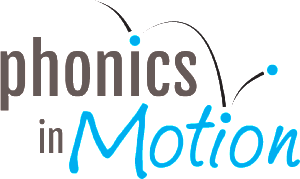When it comes to teaching reading, there are many different methods and approaches that educators can use. However, in recent years, there has been a growing recognition that structured literacy is the most effective way to teach reading to students of all ages and abilities. Let’s explore how to teach structured literacy through evidence-based, inclusive, […]
Read moreProfessional Development For Teachers: Reading Research-Aligned Options
Phonics in Motion’s professional development for teachers is research-backed, multisensory, & teaches reading in a way that makes sense.
Read moreHow To Help Kindergarten ELLs Succeed In Reading
As a kindergarten teacher, you likely have students in your class who are English language learners (ELLs). English language learners (ELLs) in kindergarten face unique challenges in reading, which can make it difficult for them to succeed in an English-only classroom. These challenges are not only faced by the students, but also by their teachers […]
Read moreThe Role of Play In Teaching Children How To Read
Play is an important aspect of children’s development, and it can also play a crucial role in teaching children how to read. Many reading and writing programs are designed for teachers, not students. This leads to confusing language, activities that don’t make sense to kids, and children being left behind because their current skill level […]
Read moreFree Phonics Worksheets | Weekly Lesson Plans Pre K – 3rd Grade
Whether you’re a parent or a teacher, it’s important to ensure children have a solid understanding of phonics early on. Phonics is essential for early childhood education. The ability to decode sounds when you are young will make it much easier to master the English language as a whole. It is important that children experience […]
Read moreENTER TO WIN! HOLIDAY RAFFLE
ENTER TO WIN OUR HOLIDAY RAFFLE! A WINNER WILL BE RANDOMLY SELECTED ON DECEMBER 15. A Complete Phonics in Motion Literacy Program for Teachers or Families + All-new Fire HD 8 tablet, 8” HD Display ($280 value giveaway!)
Read morePhonemic Awareness Activities To Boost Reading & Writing Skills
Phonemic awareness activities are an important way to teach kids literacy foundations and help them develop a positive relationship with learning. By incorporating phonemic awareness activities into day-to-day life, children learn how to identify and manipulate sounds, and assign context to them through real-life experiences. What is Phonemic Awareness? Phonemic awareness is the first step […]
Read morePhonemic Awareness vs Phonics: The Breakdown
Phonemic awareness vs phonics is sometimes confusing for people just starting to teach reading and writing skills. Both phonics and phonemic awareness are important parts of learning how to read. However, they are different aspects of reading instruction, so it is essential to distinguish them from one another. Phonemic awareness is the breakdown of the […]
Read more5 Reasons To Teach Letter Sounds With Movement
One of the most effective ways to teach phonemic awareness and phonics is to teach letter sounds with movement. The benefits of multisensory literacy instruction are endless, but we know that kids learn better when they are engaged, moving, and having fun. Teach letter sounds with movement to help kids see and feel sounds, get […]
Read moreHow To Teach Reading Skills To Preschoolers
If you’ve ever wondered how to teach reading skills to preschoolers, you aren’t alone. This is one of the most popular questions that come up in our conversations with parents. Families know the importance of giving their kids a solid head start in literacy education, but sometimes they just aren’t sure how! It is so […]
Read more
